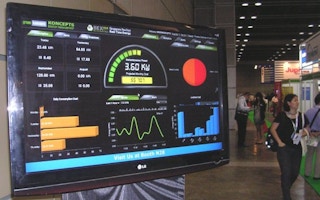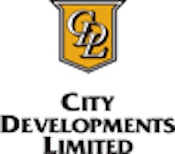Green building design might be a sexier topic than operations and management, but the key to a successful green building actually lies in the latter.
Speakers at the International Green Building Conference on Thursday highlighted that overlooking this aspect of buildings after completion results in long-term inefficiency. This problem is prevalent “even for Green Mark Platinum buildings” in Singapore, said Mr Tan Phay Ping, managing director and founder of environmental sustainability consultancy Building System and Diagnostics, which has offices in Singapore, Malaysia and China.
He told delegates at the three-day summit: “The developers and the facilities management team often think, ‘Oh, this is a green building, it should take care of itself’. But most likely, it won’t happen that way.”
“
The developers and the facilities management team often think, ‘Oh, this is a green building, it should take care of itself’. But most likely, it won’t happen that way.
Tan Phay Ping, Building System and Diagnostics
Likening the costs associated with O&M to the submerged portion of an iceberg, Mr Tan noted that the design and construction phase comprises only 10 to 20 per cent of a building’s life cycle costs while that of O&M makes up 80 to 90 per cent - thus making it the main cost to manage.
Most of the time, however, there is a “transition gap” that begins from the end of the building construction when the design team starts wrapping up to before the facilities management team takes over.
The building’s design strategies are usually not communicated during the handover. So the facilities management team simply continues with the routine management of the building, neglecting the potential for energy and water conservancy offered by the building’s green features and design strategies due to a lack of knowledge.
“The facilities management team is usually plunged right in. They undergo a quick crash course and are then expected to manage such an important asset,” said Mr Tan. “They don’t have the full story of how the building is designed – where are the ducts? How are the chillers supposed to run? How are the air handling units supposed to function?”
But this transition gap can be easily resolved. Mr Tan suggested that the people involved in the design of the building be retained during the “critical” first year of its operation to fine-tune the O&M processes alongside the facilities management team and the tenants.
In addition, the facilities management team should be roped in about three to six months before the temporary occupation permit of the building is issued so they can become familiar with and understand the design intent of the building and its features.
Agreeing, the World Green Building Council chief executive Jane Henley, who also spoke at the plenary discussion, noted that effective green building management procedures have to be put in place before the building is occupied in order to reap the maximum benefits of the building’s sustainable features.
She said that one of the challenges in making the business case for green buildings to investors and bankers is to be found in the life cycle of the building once it is finished since the real test of green buildings is how well their designs perform during occupancy.
Mr Tan emphasised that “many hidden and ‘low-hanging fruits’” in energy efficiency can be achieved by improving the O&M management processes.
An example of a common challenge for facilities management teams is inaccurate metering. The Green Mark certification requires high accuracy data to be captured using expensive building management systems, but these systems are often installed by untrained workers and not properly tested.
The system is thus unable to capture the kind of data needed for the facilities management team or energy auditor to understand how the building is performing which, in turn, prevents them from embarking on the necessary energy-saving strategies.
Overcoming this problem, Mr Tan noted, is a simple matter of ensuring proper installation and testing of the building management system. The facilities management team will also have to perform periodic calibrations of the system based on the manufacturer’s recommendation.
Another example he cited was the presence of smells from the kitchen in other parts of the building. The problem is usually caused by an imbalance in the ventilation system and is often dealt with by piping in fresh air to mitigate the smell. But this method, said Mr Tan, is inefficient and results in higher costs as more is spent on cooling the piped-in air.
The solution would be simply to focus on rectifying the imbalance in the exhaust system, and this can be done only if the facilities management team is familiar with its functions and features.
Mr Tan said another solution for improving the O&M management process of buildings is to reward the facility management team for helping the building’s owner save energy. For example, the facility manager or team members can be given incentives to undergo long-term training by taking courses offered by the Building and Construction Authority (BCA).
Dr Yu Shi Ming, associate professor at the National University of Singapore (NUS) Department of Real Estate, added that apart from careful management, users of a building must also play their part.
He cited a recent study by NUS and the BCA of 40 commercial buildings that were retrofitted to achieve Green Mark status found that it greatly reduced their annual operating costs.
He observed that in some cases, ironically, if the occupants were aware that theirs is a Green Mark building, “they are not as conscious of switching off the lights and so on to save energy”.
To address this problem, Mr Tan recommended establishing a tenant outreach programme to educate occupants on the energy and water savings potential of various features, such as the half-flush button in toilets.
Eco-Business.com’s special event coverage of the International Green Building Conference 2013 is brought to you by City Developments Limited (CDL).






















